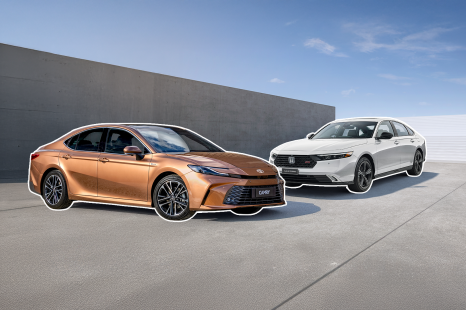

Andrew Maclean
2025 Honda Accord e:HEV RS vs Toyota Camry SL: Spec Battle
2 Months Ago
Hyundai's new Ioniq 6 electric car is a stunner at a standstill. How does the range-topping Epiq stack up on the move?
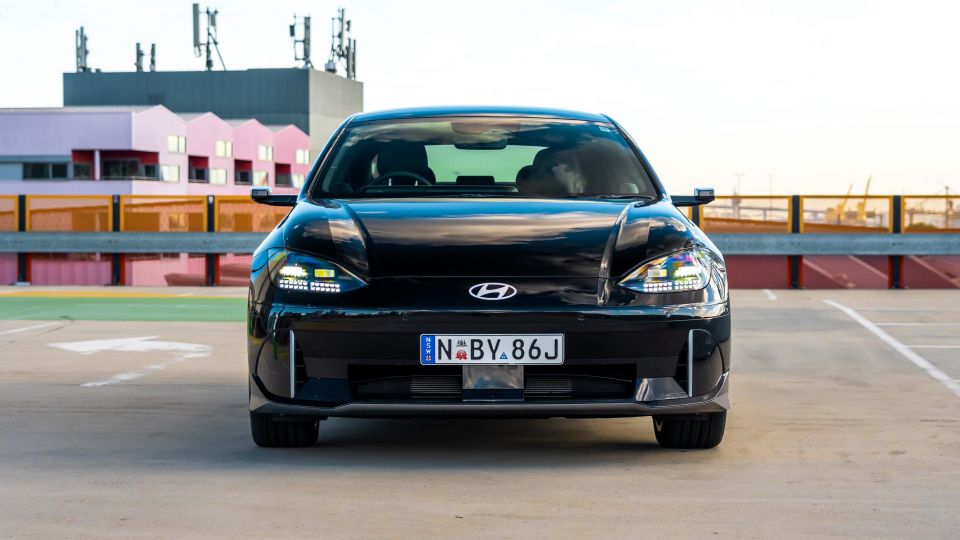
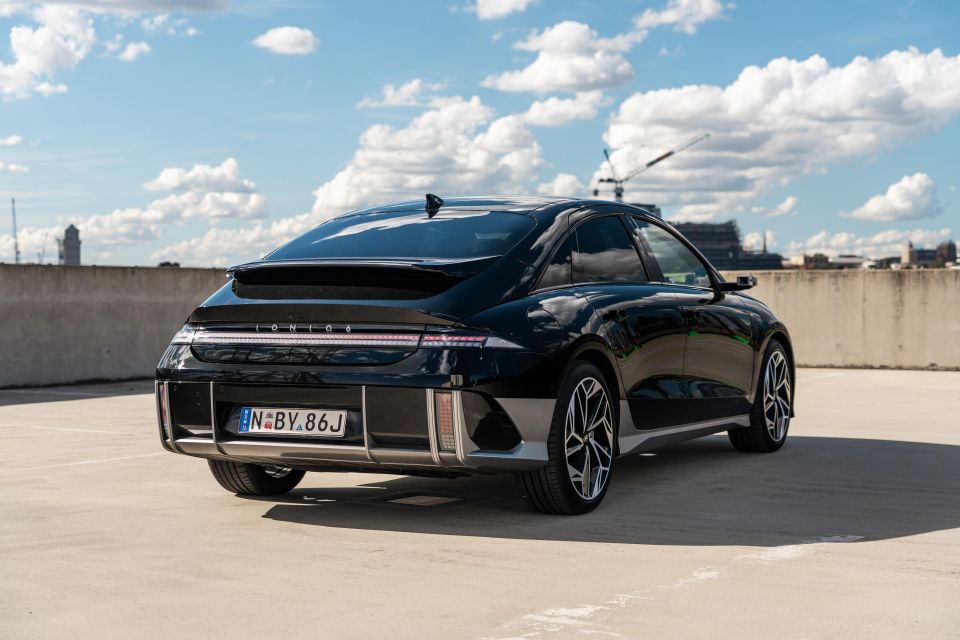

Quickly see how this car stacks up against its competition. Select any benchmark to see more details.
Where expert car reviews meet expert car buying – CarExpert gives you trusted advice, personalised service and real savings on your next new car.
Hyundai isn’t holding back with the designs of its new electric cars.

First came the blocky Ioniq 5 SUV, with a design that wouldn’t have looked out of place in an Atari game, and now we’ve got the dramatic Ioniq 6 sedan – or should that be streamliner?
Where the Ioniq 5 takes on the Tesla Model Y, the 6 is priced and shaped with one eye on the rampantly popular Model 3. It rides on the Hyundai Group’s latest E-GMP platform, so it’s thoroughly modern, and is offered in three trim levels.
On test here is the range-topping Epiq. With dual-motor all-wheel drive, a luxurious interior, and high-tech digital side mirrors, it’s the most expensive Hyundai electric car you can buy in Australia right now.
That doesn’t necessarily mean it’s the best, though.
The Ioniq 6 carries a premium over the equivalent Ioniq 5 SUV, although that’s not uncommon. After all, style comes at a cost.
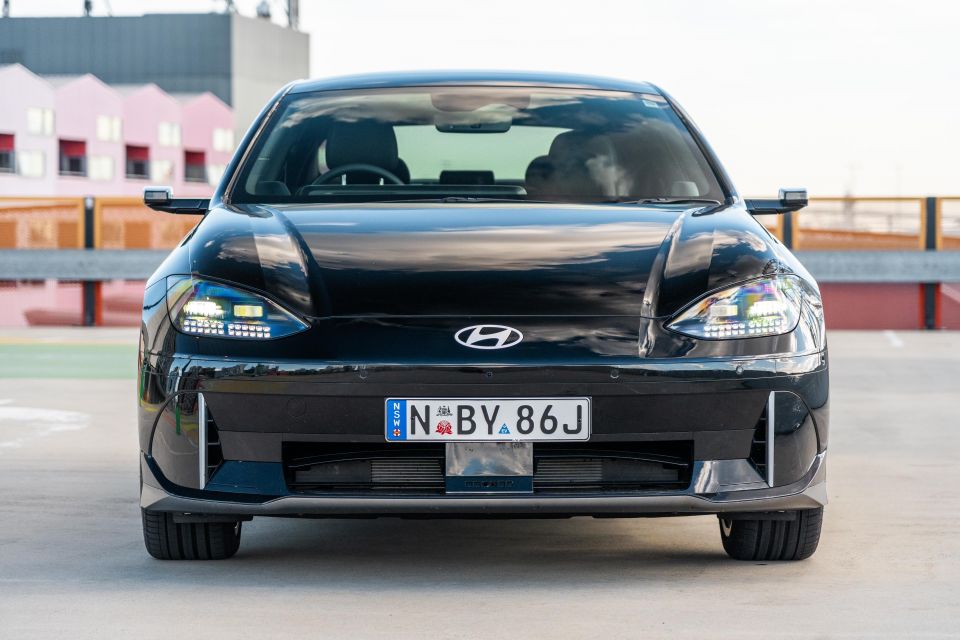
The range-topping Epiq on test has a list price of $88,000 before on-road costs, equivalent to roughly $95,000 drive-away using a Victorian postcode. The mid-range (and $4500 cheaper) Techniq shares its all-wheel drive setup with the Epiq; the base Dynamiq is rear-wheel drive.
Over at Tesla, the Model 3 Performance is now $86,900 before on-road costs thanks to a recent price cut. You can also get into the Polestar 2 Long Range Dual Motor for ~$80,000 before on-road costs, although you’ll need to add around $10,000 in options to have it equivalently specified to the Hyundai.
Matte paint is an extra $1000.
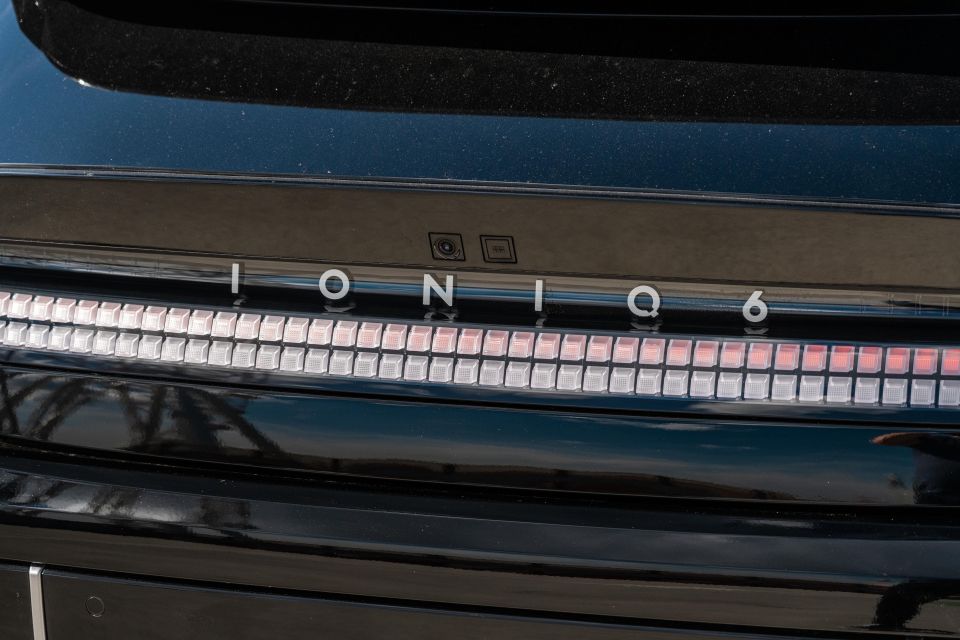
2023 Hyundai Ioniq 6 pricing:
All prices exclude on-road costs.
Hyundai has made plenty of bold choices inside the Ioniq 6 to match its striking exterior.
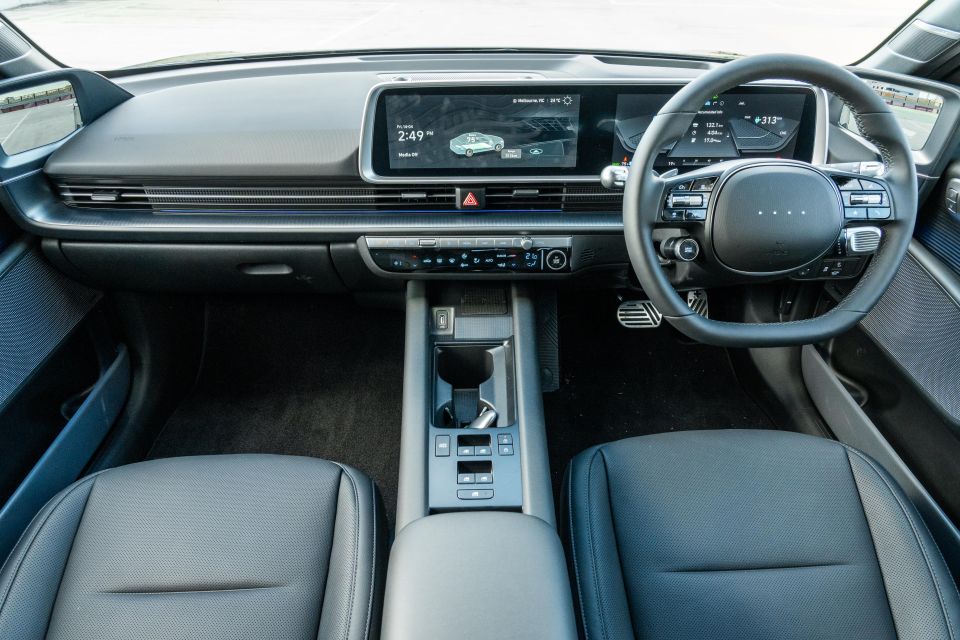
The wing-shaped dashboard is clean, the slim doors feature a unique design, and the bridge-style central tunnel borrows from the VE Commodore with its bank of window switches. Although some elements are shared with the Ioniq 5, the 6 has a feel of its own.
It’s not all sunshine and roses, though. The seating position is too high for tall drivers up front, and it’s hard to get the relationship between the wheel, pedals, and seats right. I wasn’t able to get comfortable, and the sense you’re perched on phone books is distinctly out of keeping with the long, low vibe Hyundai has chased with the exterior design.
Blame the combination of a chunky battery pack under the floor and that sloping roofline. Points still go to the Zero Gravity seats for what they can do when the car’s stationary, reclining like a business class bed so you can nap while the charger zaps.
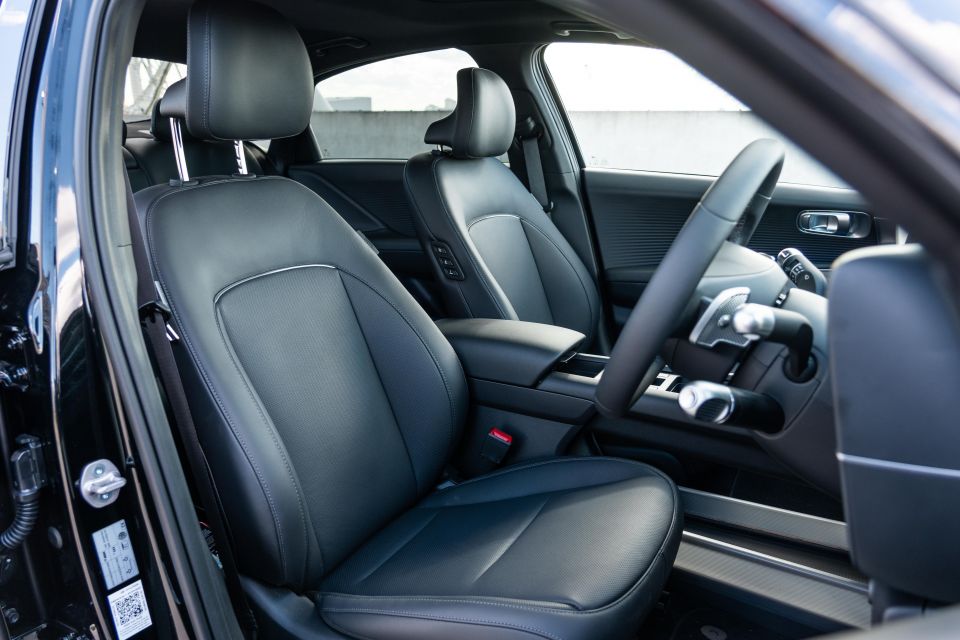
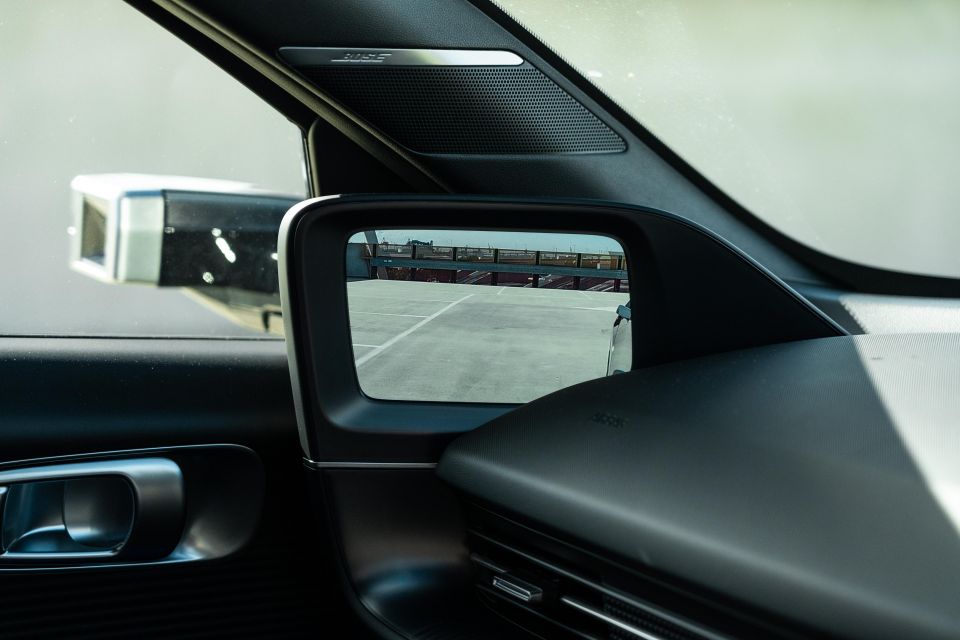
It’s a shame, because otherwise most of the boring, practical stuff is taken care of. The transmission tunnel has acres of storage space up top, with dual cupholders, a wireless phone charger, and a decent bin under the armrest, and beneath all of that is an open space perfect for a handbag. You also get usable door pockets.
The infotainment system is shared with most of the Hyundai range.
It’s mounted a long way from the driver, which makes reaching its corners hard even if you have long arms like me, but most of the menus are easy to work out on the move.
The shortcut buttons at its base are handy, but it would be good to see more electric-specific content baked in. It’s also time Hyundai started including wireless Apple CarPlay and Android Auto – it’s crazy the most expensive, highest-tech Hyundai electric car in Australia still doesn’t feature the technology.
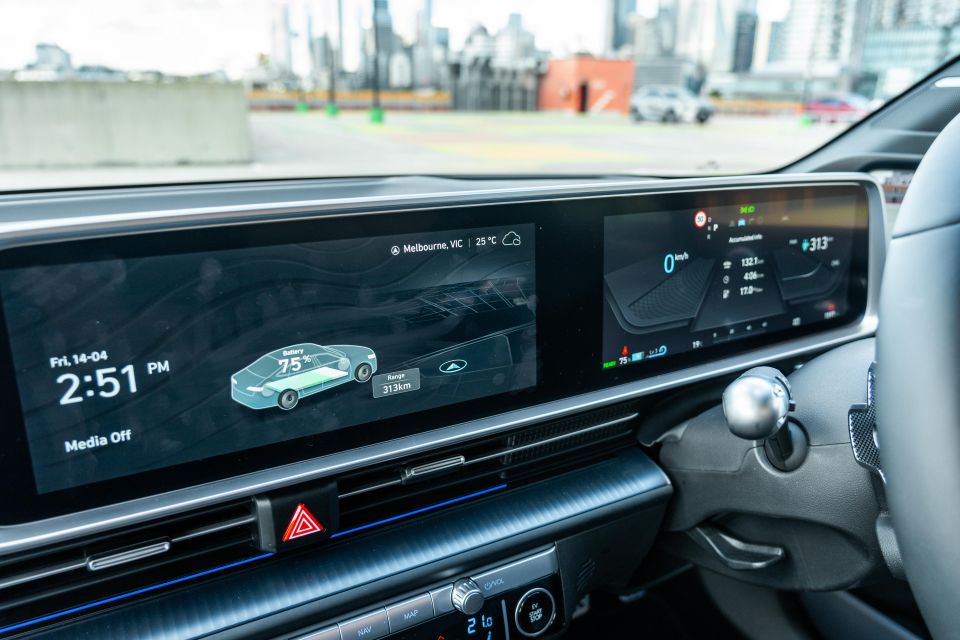

It feels like time has been poured into making the Ioniq 6 look special, and significant effort has gone into perfecting the 800V platform underpinning it.
The infotainment technology doesn’t have that same feel. It’s functional and full-featured, but it’s more normal than the rest of the car. Likewise the digital instrument cluster, which can’t display live maps, has a limited range of looks to choose from… none of which are match for what’s on offer in Volkswagen Group cars.
Beneath the touchscreen is a climate control pod with capacitive controls. It’s better than having no proper climate controls, but Hyundai still forces you to use the touchscreen to activate your seat heater.
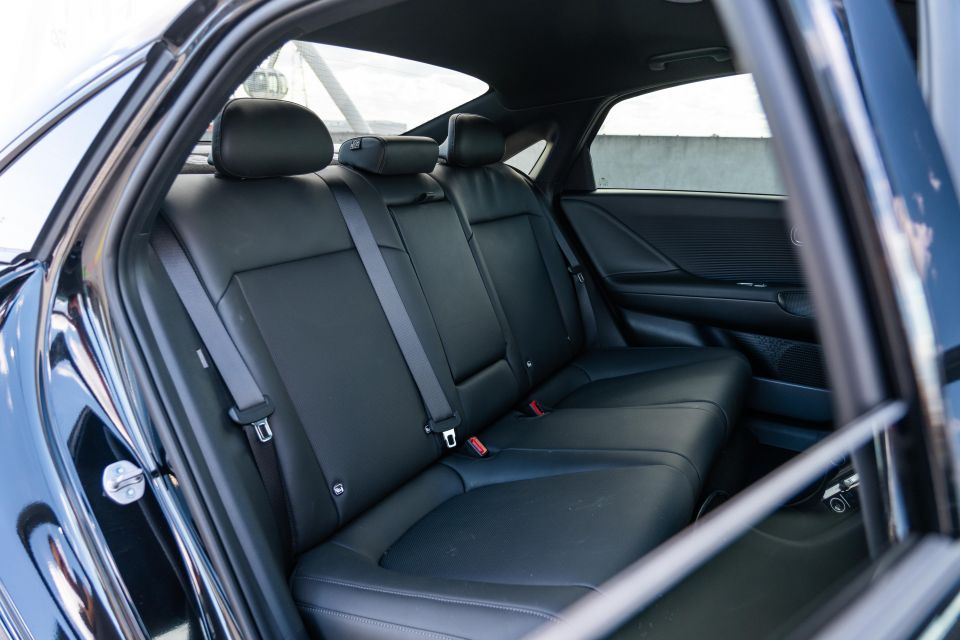
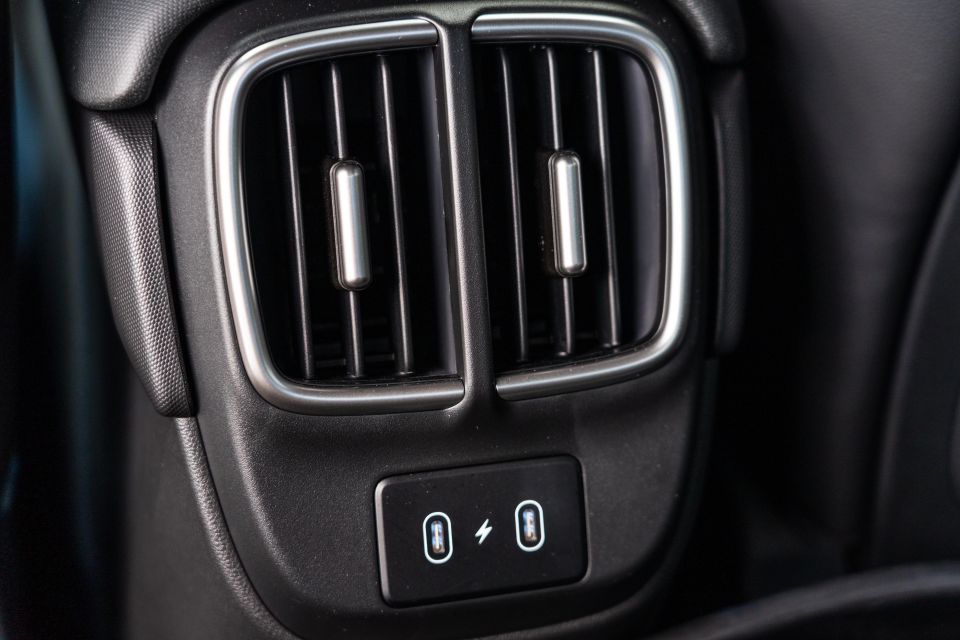
Legroom in the rear is excellent, thanks no doubt to the 2950mm wheelbase. You’ll get adults back there without too much trouble, provided they don’t have big hair – the sloping roofline eats into headroom, and makes the back seat feel more claustrophobic than it otherwise might have.
It’s worth noting the Tesla Model 3 and Polestar 2 also have compromised rear seats because of their rooflines, but both have full-length glass roofs that make rear passengers feel a bit less closed in.
There are directional rear air vents and USB-C charging ports at the rear, as well as netted map pockets and a fold-down centre armrest with cupholders. You also get ISOFIX anchors on the outboard seats, in addition to top-tether points for all three rear positions.

Further back again under the boot lid is a 401-litre boot across the range.
The rear seats can be folded via releases to allow longer items to load through, but if practicality is your priority the Ioniq 6’s hatch-backed rivals might be a better fit.
The Ioniq 6 Techniq and Epiq have a dual-motor all-wheel drive powertrain with system outputs of 239kW and 605Nm.
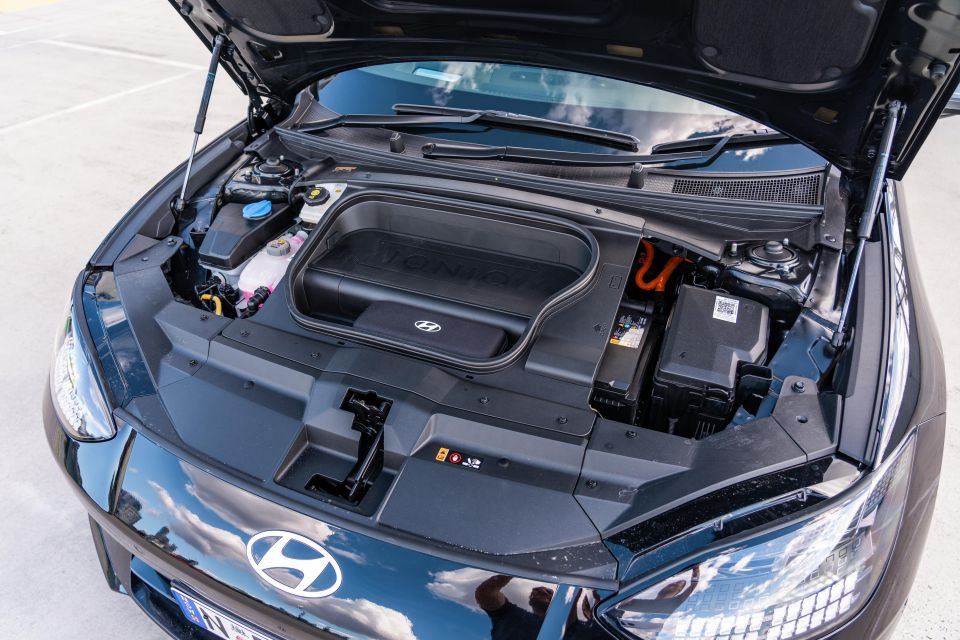
All three variants use a 77.4kWh lithium-ion battery pack, good for 519km of range in the Techniq and Epiq.
All Ioniq 6 models use an 800V electrical architecture which, connected to a public DC fast charger, allows for a 10 to 80 per cent charge in 18 minutes. Plugged into a conventional three-pin socket, the car takes 34 hours and 20 minutes for a full charge.
Like the Ioniq 5 and Kia EV6, the Ioniq 6 features vehicle-to-load technology that allows it to output 2.4kW through an adaptor. You’re able to plug in appliances or tools and they’ll run like they’re on a regular home socket.
We saw average energy consumption of 17kWh per 100km, good for a range of around 455km.
Although the Ioniq 5 and 6 share their underpinnings, the pair feels distinctly different on the road.
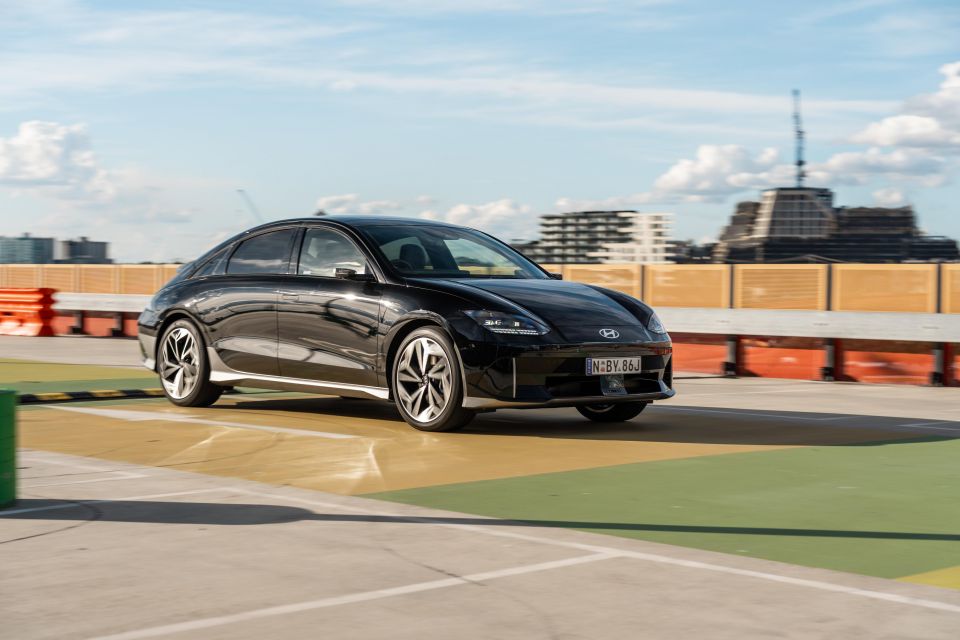
The 6 is more tied down, with a tauter ride and different steering that makes it feel like a sporty-ish European sedan.
It’s still very happy to do the low-speed stuff that most owners do, most of the time. The throttle is nicely tuned, and the combination of dual-motor traction and 605Nm of torque makes the Ioniq a natural fit for the traffic light grand prix.
The ride is tauter than the ultra-relaxed Ioniq 5 SUV, but even on 20-inch alloy wheels the 6 does a solid job keeping potholes and pimply city streets at bay. The only real knock is the fact it can be busy over high-frequency bumps at low speeds, although it settles down nicely as the speed climbs.
With reasonably light, direct steering the Ioniq is easy enough to place in tight spaces. The surround-view cameras, parking sensors, are blind-spot view camera are all on hand to put obstacles in the spotlight, but the camera mirrors are too clever by half.

They’re an improvement on the units fitted to the Audi e-tron, but even after a week behind the wheel it was hard to accurately gauge how far away approaching cars were, and parking with them is far more difficult than it really should be. Matt Campbell had the same problem during his time behind the wheel of the Ioniq 5 Epiq as well.
Acceleration is every bit as impressive as you’d expect, with a claimed 100km/h sprint time of 5.1 seconds and a claimed 80-120km/h time of 3.3 seconds. It’s delivered in a lovely, linear way – rather than snapping your neck at launch and tapering, the thrust just keeps building when you keep your foot in.
Hyundai’s regenerative braking isn’t quite as good. It can be toggled through three modes, or locked into one-pedal mode using the paddles behind the steering wheel. Unfortunately, that setting is reset when you turn the car off.
One of the perks of owning an EV is one-pedal driving, so the fact Hyundai makes you opt-in every single drive is hard to understand, and is totally out of keeping with the electric-first ethos that has otherwise informed the car.
On the open road, the Ioniq 6 feels nicely settled. It’s whisper quiet, no doubt thanks in part to the slippery body and slim camera mirrors, and keeps tyre roar on Australia’s ugly coarse-chip roads to a minimum.
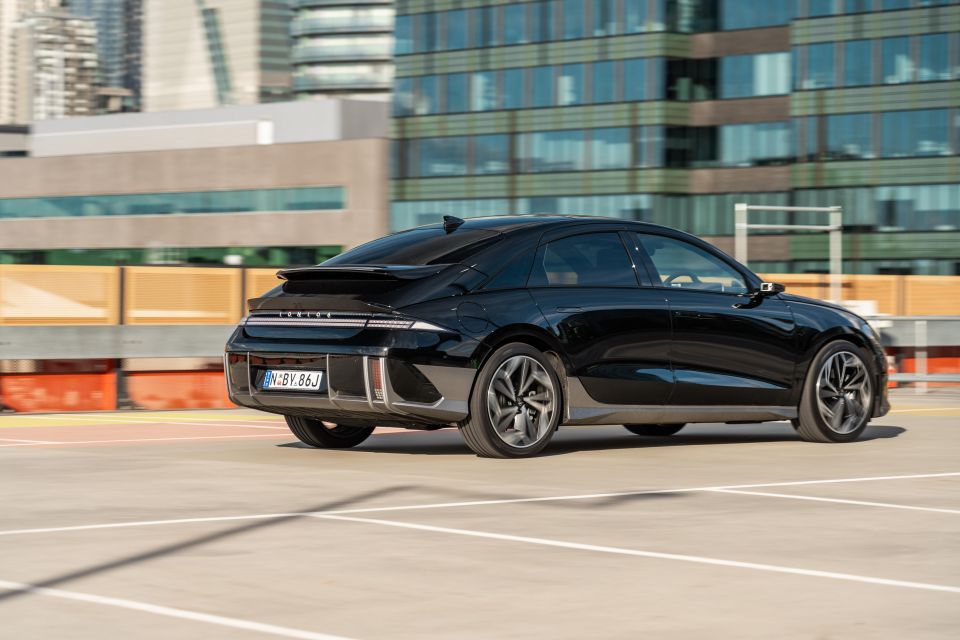
Unlike the super relaxed 5, the 6 feels capable of hustling along a twisty road as well. Body roll is kept nicely in check, and traction from the all-wheel drive system is absolute. We know on a skidpan rear-drive Hyundai electric cars will roast their tyres, but you’d have to be doing something pretty crazy to get out of shape on the public road.
Hyundai’s adaptive cruise control and lane-keeping assist are good, and make this a very easy car to drive long distances. The lane-centring system takes things a step further by more actively positioning the car rather than cutting in if you stray, and arguably is too overbearing in how it operates.
Don’t get me started on the speed limit warning system, either. It defaults to on every time you start the car, and beeps every time you go even 1km/h over the limit – even if it’s wrong about the limit, like in school zones outside of school times.
Creep over 60 and it beeps. Drop below and it deactivates. Creep back over and you guessed it, it beeps again. Three button presses are required to turn it off every single time you start the car.
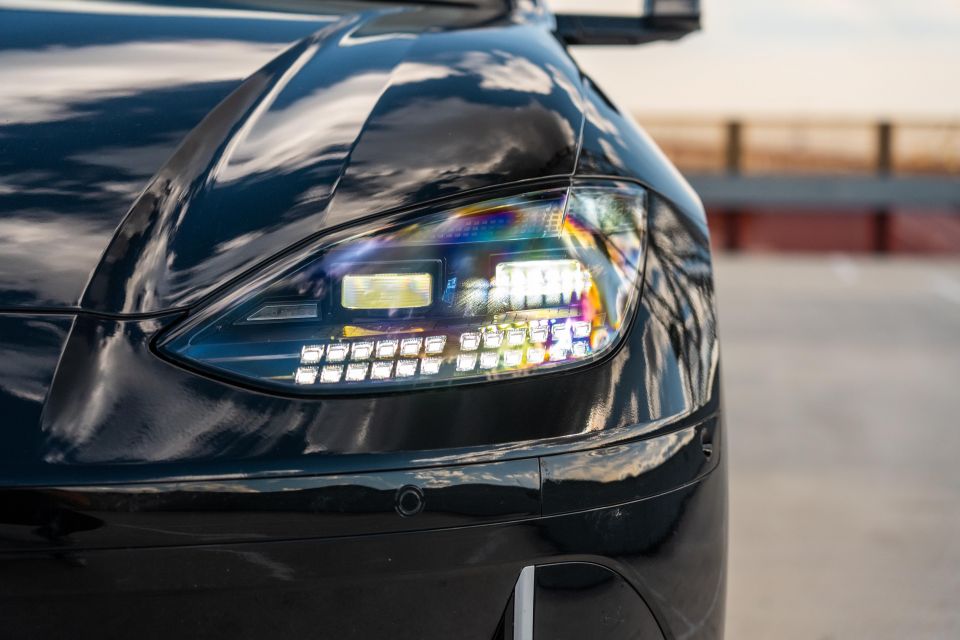

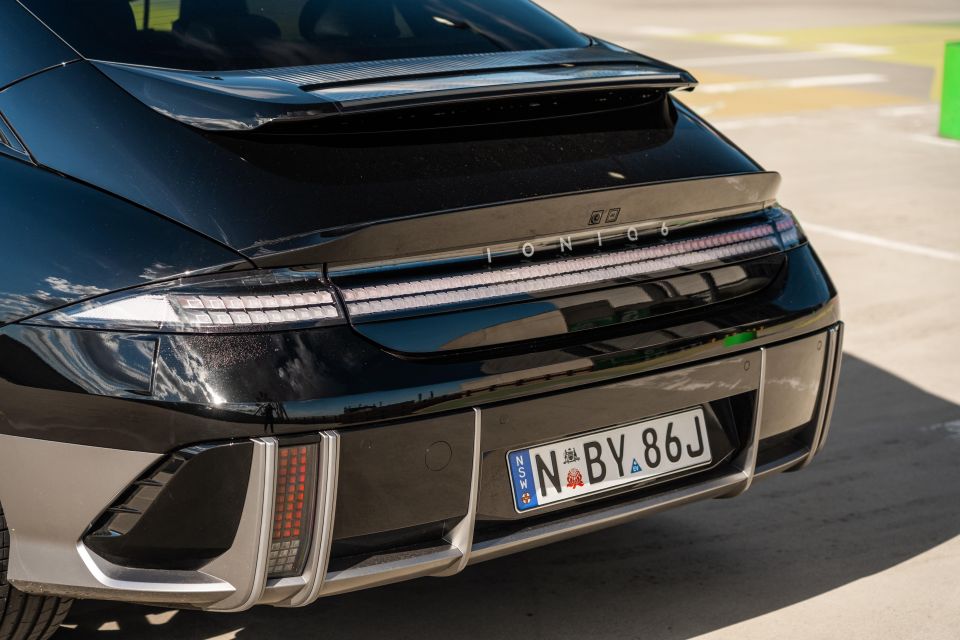
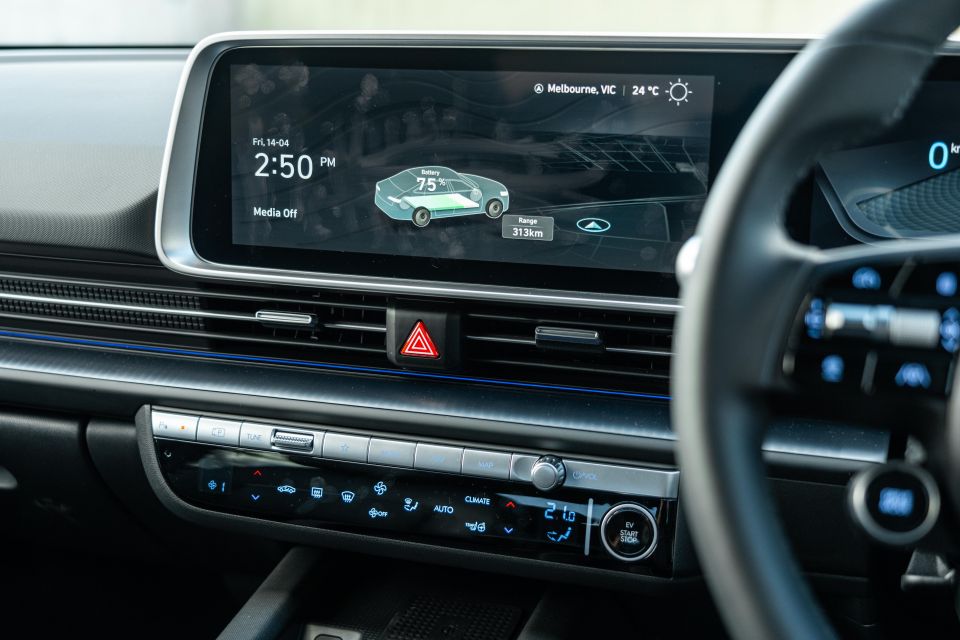
Where expert car reviews meet expert car buying – CarExpert gives you trusted advice, personalised service and real savings on your next new car.
Ioniq 6 Dynamiq highlights:

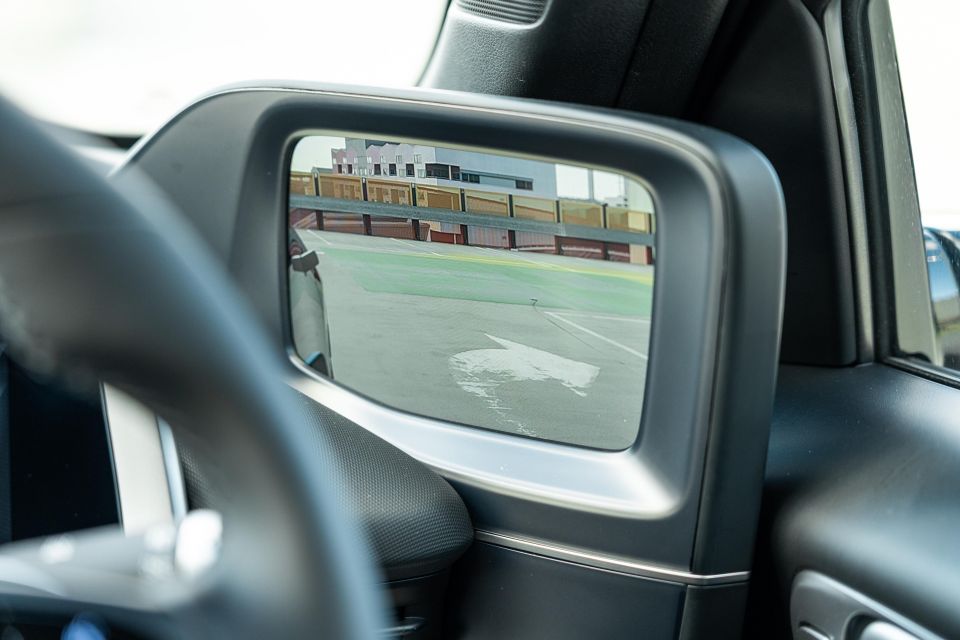
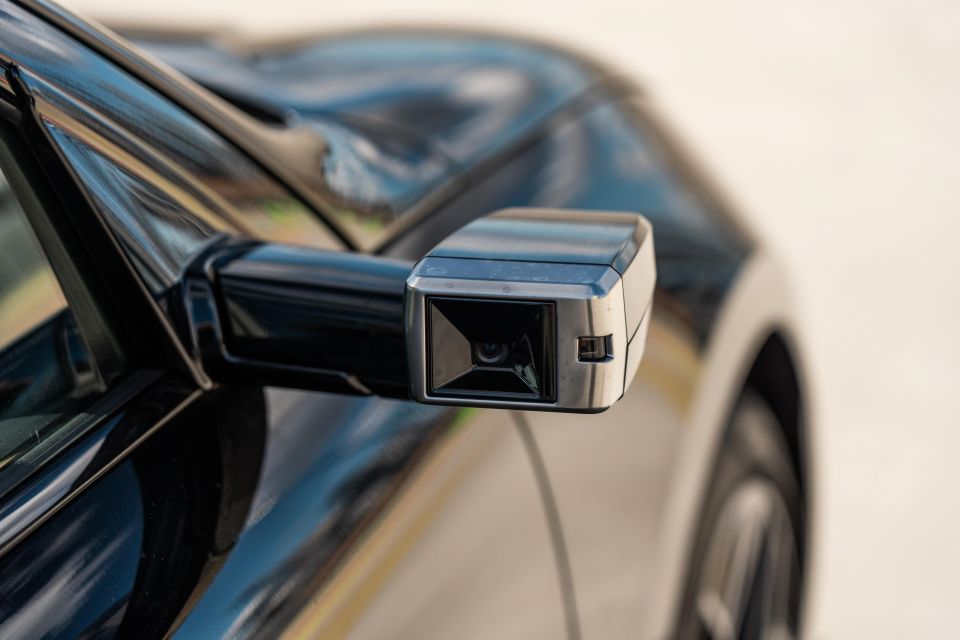
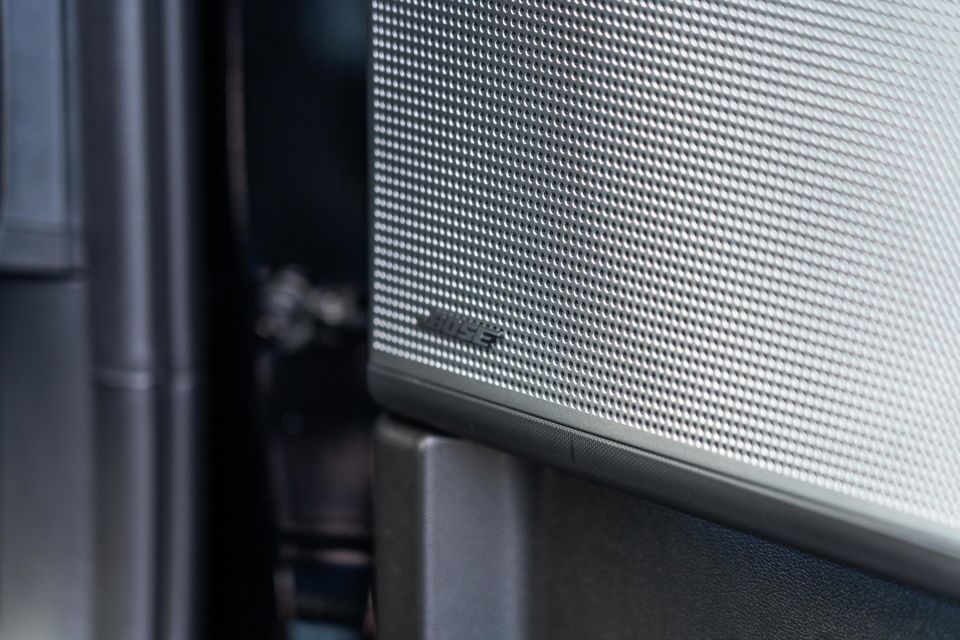
Ioniq 6 Techniq adds:
Ioniq 6 Epiq adds:
Matte paint is a $1000 option across the range.
The Ioniq 6 arrives in Australia with a five-star ANCAP safety rating, based on testing by Euro NCAP in 2022.
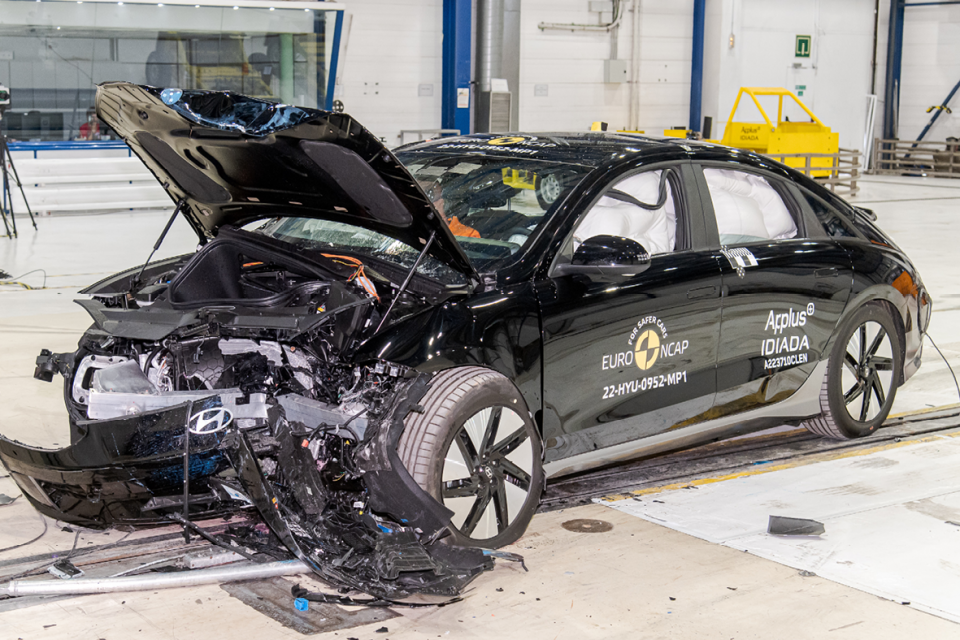
It earned its rating on back of a 98 per cent score for adult occupant protection, 87 per cent for child occupant protection, 66 per cent for vulnerable road user protection, and 90 per cent for safety assist.
Standard safety features include:
The Ioniq 6 is backed by a five-year, unlimited-kilometre vehicle warranty plus an eight-year, 160,000km high-voltage battery warranty.
Servicing is required every 24 months or 30,000km, whichever comes first. The first two services are capped at $560 respectively for all models.
Hyundai deserves credit for taking some risks with its new electric cars. The Ioniq 6 looks like nothing else, even alongside the Ioniq 5 SUV with which it shares most of its hardware, which is impressive.
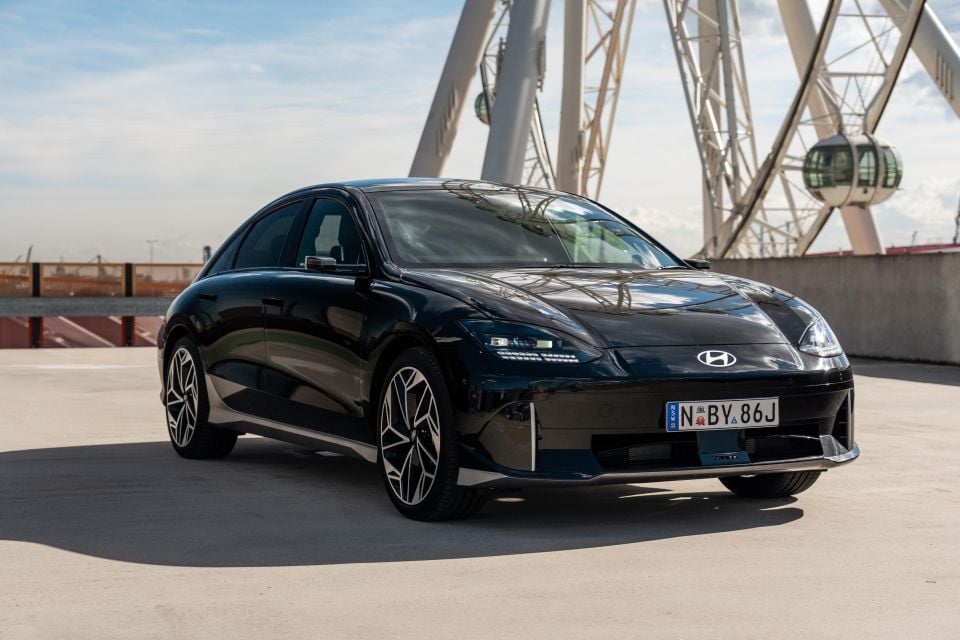
Some of the decisions Hyundai has made in search of aerodynamics (or an arresting design) have impacted the 6 for the worse, though.
The driving position really should be better, the boot isn’t as practical as a large liftback, and the digital mirrors fitted to our range-topper cause more issues than they solve.
Does that mean you should rule it out, then? No, not really.
None of the issues with the Ioniq 6 are crippling, and its quirks will no doubt endear it to a certain crowd. It’s still a solid addition to Australia’s growing crowd of electric cars, and an interesting alternative to luxury sedans like a BMW 3 Series.
I’d have mine in Techniq guise, with almost all the same kit as the range-topper and proper mirrors.

Click the images for the full gallery
Where expert car reviews meet expert car buying – CarExpert gives you trusted advice, personalised service and real savings on your next new car.
Scott Collie is an automotive journalist based in Melbourne, Australia. Scott studied journalism at RMIT University and, after a lifelong obsession with everything automotive, started covering the car industry shortly afterwards. He has a passion for travel, and is an avid Melbourne Demons supporter.


Andrew Maclean
2 Months Ago
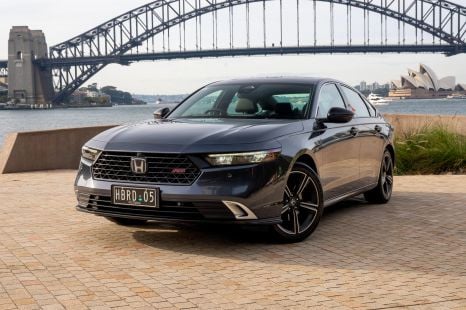

Andrew Maclean
2 Months Ago
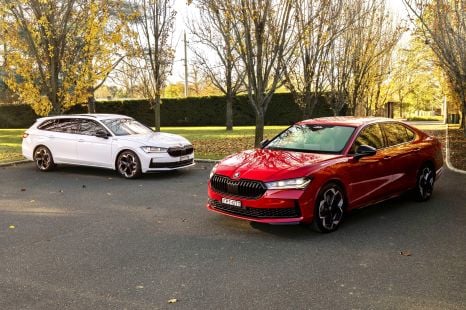

Max Davies
2 Months Ago
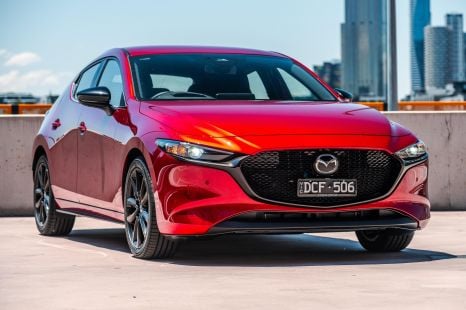

Josh Nevett
2 Months Ago


Josh Nevett
1 Month Ago


James Wong
30 Days Ago